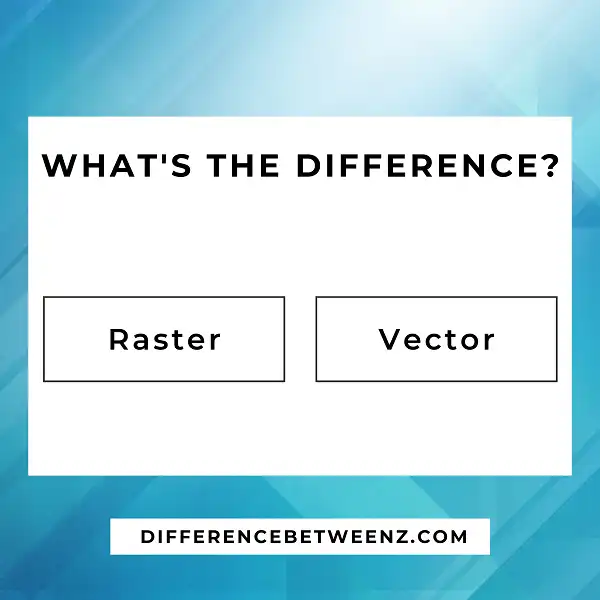There are two main types of images: raster and vector. Though both have their own specific uses, it can be hard to decide which to use for your project. In this blog post, we’ll outline the difference between raster and vector images, and when you should use each. So, let’s get started!
What is Raster?
A raster is a digital image composed of a matrix of pixels. Unlike vector images, which are defined by lines and shapes, raster images are defined by a grid of individual pixels. Each pixel contains information about the color and brightness of that particular location in the image. When viewed from a distance, the individual pixels blend together to create the illusion of a continuous image. Raster images are well suited for photographs and other images with complex shading and color gradients. However, they can be more difficult to edit than vector images, since each pixel must be individually manipulated. Raster images are also more susceptible to degradation when enlarged since this can cause the individual pixels to become visible.
What is Vector?
A Vector is an image that is made up of points, lines, and shapes. Vector images are usually created in software such as Adobe Illustrator or Inkscape. Vector images have a number of advantages over raster images. Vector images can be scaled to any size without losing quality, and they can be printed at any resolution. Vector images are also usually smaller in file size than raster images. Vector images are made up of mathematical equations, so they can be edited by changing the numbers in the equations. This makes vector images very versatile and easy to edit. Vector images are the preferred format for logos, illustrations, and graphics that will be used in print or online.
Difference between Raster and Vector
Raster and vector images are common image file types used for different purposes. Raster images are made up of pixels, small blocks of color data that together form an image. Vector images, on the other hand, are made up of paths, or lines that connect to define an image. Raster images are typically more detailed than vector images, but they can only be scaled up so much before they become pixelated. Vector images can be scaled up or down infinitely without losing quality. When it comes to file size, raster images typically take up more space than vector images. Raster images are best used for photographs or other highly detailed images, while vector images are better suited for logos or illustrations with simpler shapes.
Conclusion
In short, raster graphics are made up of a grid of pixels while vector graphics are composed of paths, points, and curves. Raster images are resolution-dependent while vector images can be scaled to any size without losing quality. Vector images also lend themselves well to animation and manipulation. So which type is right for you? If you need high-resolution images or plan on animating your graphics, raster is the way to go. Otherwise, a vector will likely serve you better.


